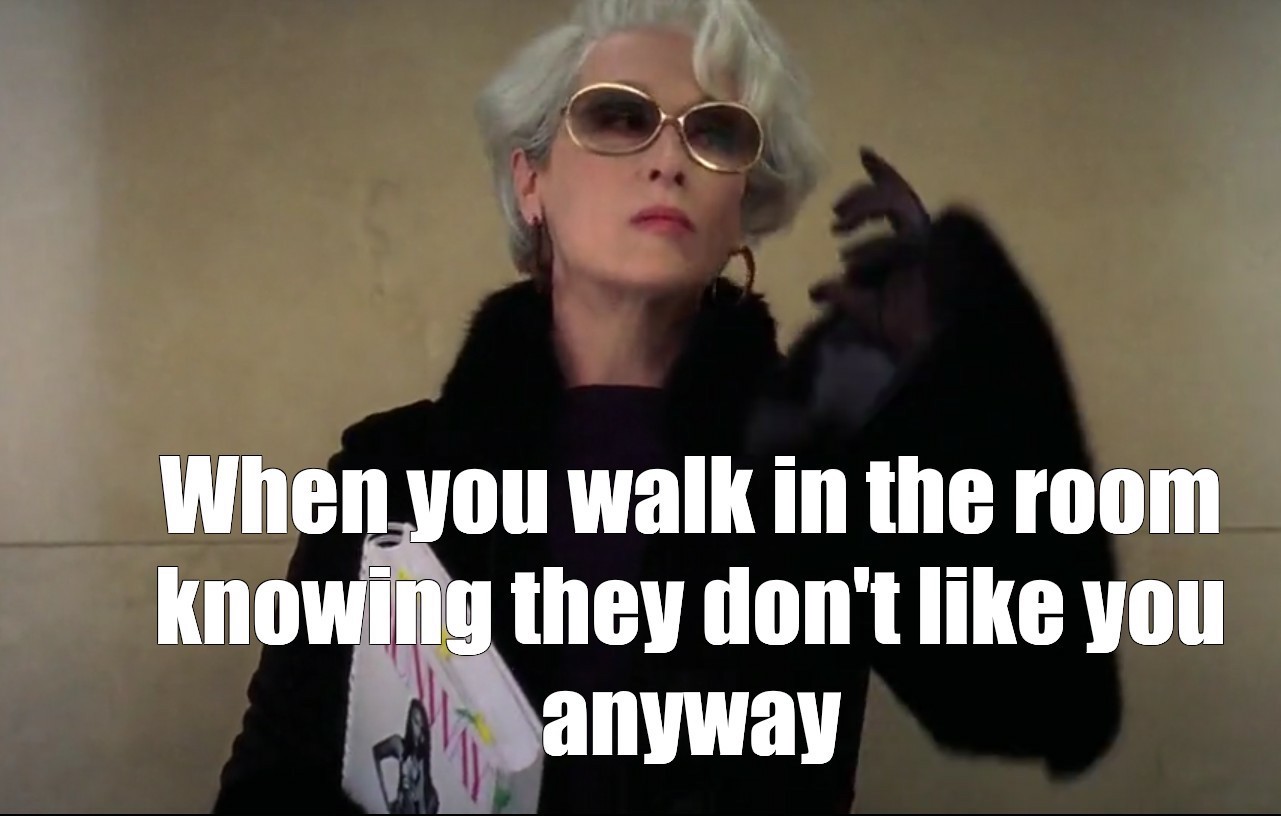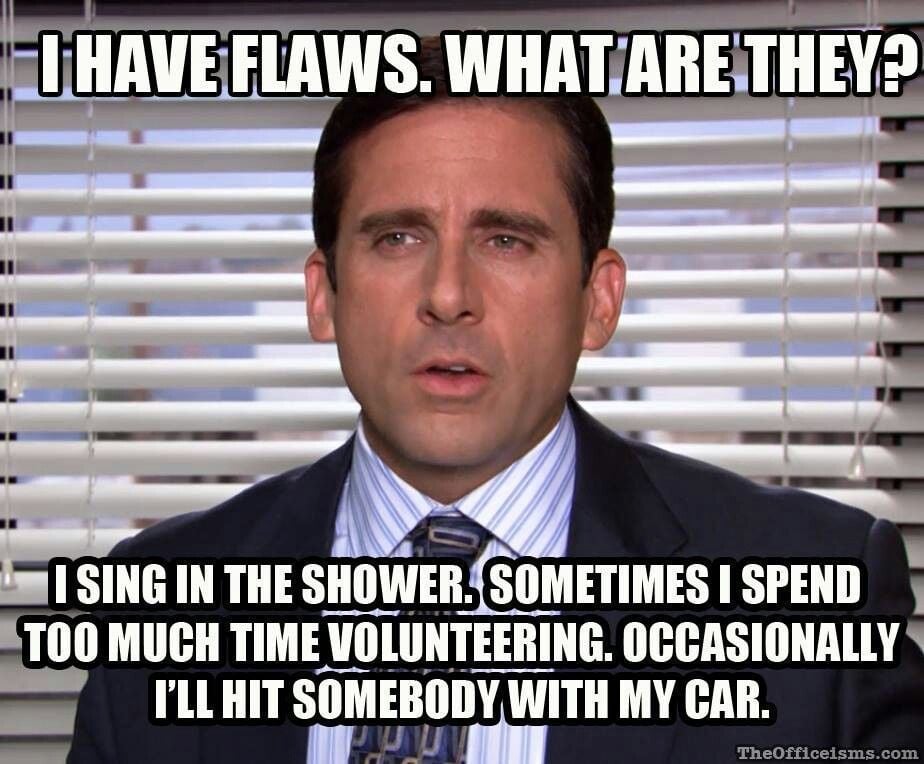
Miranda Priestly to Darth Vader: The awful characters you shouldn’t love
An antihero is just a villain you make excuses for.
Villains are amazing, but we should not look up to them. It’s like watching a man set off fireworks in the parking lot of a Walmart. Incredible to watch, but they should not be a role model for anyone.
In that vein, we have compiled a list of villains that society has confused as heroes. They are amazing to watch, but nobody should be looking up to them or taking their advice seriously:

Miranda Priestly
Miranda Priestly (Meryl Streep) from The Devil Wears Prada is arguably the world’s worst boss and we find it distressing that she is referenced in so many puff piece articles about her “epic” moments.
She may be an epic villain, but she’s still a villain.
Priestly routinely treated anyone beneath her as subhuman, undeserving of respect or kindness. She was verbally abusive, cruel, mean-spirited, and petty. She required her employees to dedicate their lives to a job that did not pay well or was guaranteed to turn into a career without adhering to the same schedule, and people hold her up as some feminist icon!

Even during the film itself, her tortured assistant Andrea Sachs (Anne Hathway) argues with a friend over labeling Priestly as a sadist, noting “she’s tough, but if Miranda were a man, no one would notice anything about her except for how great she is at her job.”
That’s not the endgame of feminism, Andy! We want to remove the abusive bosses from power, we don’t need to #leanin to get more women acting like assholes, too!
Even Priestly’s mic-drop speech midway through the film on the importance of the fashion industry; the one that is referenced and quoted and memed and led to us understanding what the color “cerulean” looks like in real-time, comes across as insidious, rather than inspiring.

For 2 minutes and 49 seconds, Priestly breaks down the far-reaching influence of the fashion industry, conveniently leaving out that the fashion industry is almost as poisonous as its impact on the globe. It is the world’s second-largest polluter, losing only to the oil and gas industry, and the industry itself is rife with abuse, animal cruelty, slave labor, and unrealistic beauty expectations.
But Priestly really stuck it to that overqualified, overworked assistant, so yassssss queen slay like you slay those union regulations!

Darth Vader
He blew up a planet and we’re glad he’s dead.

Kylo Ren
He blew up a star system and we’re glad he’s dead.

Indiana Jones
Indiana Jones (Harrison Ford) would have done better to call himself the British Museum, because all he did was take art from indigenous groups and then tell them it was safer far away from its native home.
The opening to Indiana Jones and the Raiders of the Lost Ark is a masterclass of a cold open. It begins with Indy narrowly escaping death from guns, arrows, impalement, multiple open pits, poison, and backstabbing to secure a golden idol from a temple in Peru.

He ends up giving the idol to rival archaeologist René Belloq (Paul Freeman) and the indigenous Hovito people, and we as the audience are supposed to feel bad about it. But just because a man punches Nazis on the regular does not mean he is a good person.
He was stealing! Indigenous art! With the justification, it would be safer in a museum! While that argument might work for a city or region embattled in civil war or a natural disaster, this was the most well-protected artifact to ever exist. It might as well be the art in the British Museum, because it was a fortress that would never give up its treasures.

Michael Scott
Michael Scott (Steve Carrell) from NBC’s The Office should have been fired 15 minutes into the premiere episode.

Tyrion Lannister
Literally every single person on the internet has discussed the horrific ending of HBO’s Game of Thrones ad nauseum, but not enough have addressed how Tyrion Lannister (Peter Dinklage) has been annoying from the premiere.
We are introduced to the youngest Lannister at a brothel, because the showmakers really wanted him to be relatable for the general audience, and his character arc was just a slow trudge into monotony from that opening scene.

Tyrion is a villain who sees himself as a victim; his relationship with Shae (Sibel Kekilli) is a prime example. Their relationship was always based on the skewed power dynamic in his favor, and it ended when he strangled her to death.
In any other show, he would have had to atone or face retribution for what he had done, instead, he was able to star as the lead for four more seasons before he encouraged human potato Jon Snow (Kit Harington) to more intimate partner violence.

Woody
Toy Story was a marvel when it came out in 1995. It broke the mold in more ways than one: it was Pixar’s first feature-length film and it was the first movie to be entirely computer-animated.
It was an auspicious beginning for a company that would soon gain a name as a leader in children’s entertainment that makes grown adults cry, and the film still holds up to this day.
However.

Woody (Tom Hanks) was a little sh!* and our least-favorite character from the movie.
We can’t imagine there is a film where we are more sympathetic to Tim Allen’s character than Tom Hanks, but that’s Pixar for you. Constantly subverting expectations.
Woody was possessive, self-centered, and bossy. His jealous nature over any toy that got too close to Andy (John Morris) came across less as a loving toy, and more like the bad boyfriend from a Lifetime movie.

Woody was the mean girl in school; he was at the top of the hierarchy and would not allow anyone to upset that delicate ecosystem.
That’s why the introduction of Buzz Lightyear (Tim Allen) was such a delight. Unlike the rest of the characters on this list, Woody was forced to grow and evolve as a character, and he actually did it! He was forced to reevaluate who he was and what he wanted during the buddy comedy that took place during the second half of the film, and it made him a better toy!
That should be the lesson here, sometimes people are the worst, but we can hold out hope that an inanimate object might have more of a moral compass than a human being.



